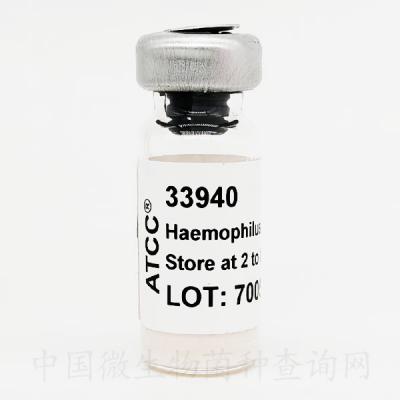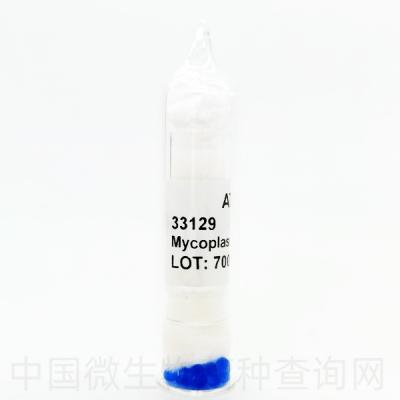
ATCC® Number:23724-B2™
Host Organism: Escherichia coli (Migula) Castellani and Chalmers ATCC23724
Designations: lambda standard
Depositors: A Campbell
Biosafety Level:1
Shipped: freeze-dried
Permits/Forms: In addition to the MTA mentioned above, other ATCC and/or regulatory permits may be required for the transfer of this ATCC material. Anyone purchasing ATCC material is ultimately responsible for obtaining the permits. Please click here for information regarding the specific requirements for shipment to your location.
References : 6801: Campbell A. Sensitive mutants of bacteriophage lambda. Virology 14: 22-32, 1961. PubMed: 13690195
Host
Escherichia coli C600 [EMG 10, EMG10, NCIB 10222] (ATCC 23724)
Temperature
37°C
Atmosphere
Aerobic
Handling procedure
Follow general procedures given below for phage propagation.
Escherichia coli strain C600 (ATCC 23724) is the recommended host. For any additional information about the host, see the product information sheet for ATCC 23724.
All broth used throughout should be fortified with calcium chloride (CaCl2) and magnesium chloride (Mg Cl2) at a final concentration of 10mM each.
GENERAL PROCEDURES FOR THE PROPAGATION OF BACTERIOPHAGE.
To recover phage from frozen vial:
Before opening the phage vial, prepare an actively growing culture of the recommended host strain. The host should be 16-18 hours old.
Pick one colony from the isolation plate and homogenize in 5 mL of the appropriate broth. Incubate at 37°C while shaking (160-180 rpm) until the growth reaches OD600 of 0.1 to 0.4.
Add approximately 0.5 mL of the prepared broth to the frozen bacteriophage vial. Infect each 5 mL culture with 100 µL of the bacteriophage. Shake at 160-180 rpm in 37°C overnight. After 16 to 18 hours, centrifuge phage culture at 4000 g for 10 minutes. Filter the lysate with a 0.2 µm or 0.45 µm PES sterile filter. The filtrate can be stored at 4°C.
Prior to performing a spot titer, warm one or two plates at 37°C.
Melt the soft agar (0.5% agar added to the recommended medium) and maintain at 43°C to 45°C until ready to use. It is best to allow the melted agar to remain at this temperature for about an hour to ensure that it has cooled to 43°C to 45°C. Warmer temperatures may kill the host.
Add 50 to 100 µL of the host culture from step 1 to each 9 mL (approximately) of soft agar from step 5 above. Immediately overlay the surface of each plate with 2.5 mL. Allow the overlay to harden for 10 to 20 minutes.
The phage lysate can be serial diluted in a 96 well plate in quadruplicate (if desired). Aliquot 90 µL of broth medium into each well. Add 10 µL of phage filtrate from step 3 to each well and mix. Transfer 10 µL from each well of the first dilution to each well of the second dilution and mix. Continue to the desired number of dilutions.
Spot 2 µL of each dilution on the plate from step 6. Up to 8 dilutions can fit on a 90 mm petri dish. After overnight incubation, lysis should be visible. At the higher dilutions, individual plaques should be countable. To calculate pfu/mL, use the following formula: pfu/mL = average plaque count / [(dilution factor) (2x10-3mL)]
Spotting the phage on plates makes visualizing the lysis easier. If phage is added directly to soft-agar before pouring plates, hazy or tiny plaques may be difficult to see. Resistant host bacteria may also mask plaque formation.
To propagate phage:
Determine the total volume needed and place this amount of broth in a flask. Add a small amount of overnight host culture to the flask and incubate at 37°C while shaking until the growth reaches OD600 of 0.1 to 0.4.
Infect with the calculated volume of phage lysate using the following formula. Volume of phage to add (ml) = (8x108 x total culture volume in ml x OD600 x MOI) / phage titer (PFU/ml). Shake at 160-180 rpm at 37°C overnight.
Centrifuge phage culture at 4000 g for 10 minutes. Filter the lysate with a 0.2 µm or 0.45 µm PES sterile filter. The filtrate can be stored at 4°C.
Lysates should remain viable under refrigeration for long periods. They may also be frozen with or without cryoprotectant. If available, liquid nitrogen storage is the best method for long term storage. Most phage can also be freeze-dried. ATCC® uses double strength skim milk mixed half and half with the filtrate.
Note: To achieve the highest PFU and total volume, the broth method detailed above has demonstrated the best results if the process is followed exactly. However, if any of the equipment are not available or if the technique is not possible for other reasons, the Adam’s Overlay method described below will provide adequate results for smaller volumes at satisfactory titer count. (Adams agar-overlay method as described in M. H. Adams' Bacteriophages, Interscience Publishers, Inc., New York, 1959)
To recover phage using the Adam’s Overlay method:
Before opening the phage vial, prepare an actively growing broth culture of the recommended host strain. The host should be in early log phase. Times vary according to species but usually no more than 16 to 18 hours incubation.
Pre-warm plates of the recommended medium in a 37°C incubator.
Melt the soft agar (0.5% agar added to the recommended medium) and maintain at 43°C to 45°C until ready to use. It is best to allow the melted agar to remain at this temperature for about an hour to ensure that it has cooled to 43°C to 45°C. Warmer temperatures may kill the host.
Add one to two drops of the host culture from step 1 to each 9 mL (approximately) of soft agar from step 3 above. Immediately, overlay the surface of each plate with 2.5 mL. Allow the overlay to harden for 10 to 20 minutes.
Add approximately 0.5 mL of the recommended broth to a frozen phage vial. Transfer the entire contents of the vial into a test tube of the recommended broth medium. Perform a 1:10 serial dilution for as many passages as desired.
One drop of each dilution is spotted on the surface of a prepared overlay plate. Allow to dry. Up to four dilutions can be placed on each plate, however, it may be difficult to keep the spots from running into each other. This is up to the discretion of the biologist.
Incubate at the recommended temperature for 16 to 18 hours. For slower growing hosts, 24 hours may be needed.
To propagate phage:
Phage may be propagated by preparing overlay plates as in steps 3 & 4 above and covering the surface with approximately 0.5 mL of the concentrated phage. Alternatively, you may add the phage directly to the melted agar with host before pouring over the plates.
For a larger amount, large-sized T-flasks can be prepared with the recommended agar and approximately 12.0 mL of melted soft agar with host poured over the surface. Allow the overlay to harden. Add approximately 1.0 mL of the recommended broth to a freeze-dried phage vial or 0.5 mL to a liquid cryovial. Transfer the entire contents of the vial to the T-flask and allowed to run over the hardened surface.
Incubate overnight. When lysis is observed, scrape the soft agar off the surface of the agar plates or T-flask. Centrifuge at about 1000 rpm for 25 minutes to sediment the cellular debris and agar. Draw off the supernatant and keep.
The supernatant is passed through a .22 μm Millipore filter and the filtrate is kept and stored at 4°C to 8°C. A second filtration may be necessary to completely remove the host.





